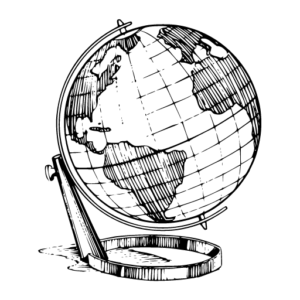Course Name:Language Arts
Course Description
In Grade 2 Language, students will explore the four units: writing, oral communication, reading, and media literacy. They will continue their journey to mastery of the English language.

Curriculum Information: Language (2008)

Course Developer: Canadian Global School

Development Date: 2022
Course Outline
Grade -2 Language Arts - Total Hours (158 Hours)
Unit One: Writing (40Hours)
Unit Two: Oral Communication (40 Hours)
Unit Three: Reading (40 Hours)
Unit Four: Media Literacy (38 Hours)
Additionally, they will create a product that uses the techniques of advertising for children ages 7-9. Students will identify what information is safe or unsafe to share online and reflect on how digital citizens should care for their online communities. Students will explain the differences between social media and real life. Lastly, they will examine how media and advertising affect one’s feelings about themselves and discuss the relevance of the media text Francine’s Bad Hair Day.
Resources Needed
This course is entirely online and does not require nor rely on any textbook. Students will need the following resources:
- Laptop and/or personal computer (preferably with Google Chrome or Mozilla Firefox as a web browser)
- Stable internet connection
- A scanner, smartphone camera, or similar device to digitize handwritten or hand-drawn work
- A device to record audio
Resources required by the student:
- A scanner, smartphone camera, or similar device to upload handwritten or hand-drawn work,
- Laptop and/or personal computer (preferably with Google Chrome or Mozilla Firefox as a web browser)
- Access to video recording and handwritten work scanning (mobile phone, tablet, iPad, webcams)
- Stable internet connection
Note: This course is entirely online and does not require or rely on any textbook.
Resources provided by Canadian Global School :
- Access to Google Suites or Microsoft Education for word processing software and presentation software. (The school will distribute accounts to students).
- Supplemental Readings

Teaching Strategies
Using a variety of instructional strategies, the teacher will provide numerous opportunities for students to develop skills of inquiry, problem-solving, and communication as they investigate and learn fundamental concepts. The integration of critical thinking and critical inquiry skills will provide a powerful tool for reasoning and problem solving and is reflected in a meaningful blend of both process and content. Throughout this course, students will:
- Interact in student-paced and instructor-paced interactive, engaging instructional lessons.
- Understand the value of diversity in learning and society
- Develop self-confidence and self-advocacy skills
- Refine their existing compensatory strategies (reading strategies, writing strategies, listening strategies, study strategies, researching strategies, strategies for memory, organizational strategies, and time management strategies) for learning and develop additional strategies to help meet their potential as learners and use throughout the elementary grades.
- Cultivate problem-solving skills to become independent learners.
- Opportunities to learn in various ways- individually, cooperatively, independently, with teacher direction, hands-on experiences, and through examples followed by practice.
- Accomplish prompts on interactive lessons; students can reflect on different texts. In addition, constant communication with teachers ensures that the students understand complex topics and apply them in their writing. They can also accomplish other tasks using animations, videos, discussion forums, live chat, and other interactive objects.
The course relies on the help of a teacher to support young learners through the lessons. The teacher will be working on facilitating the course content and participating in discussions to support students in developing communication skills.
Course Name:Math
Course Description
In Grade 2 Math, students will explore numbers and operations, patterns and variables, probability, measurement and money concepts. They will continue their journey to the mastery of Mathematics.

Curriculum Information:Mathematics (2020)

Course Developer: Canadian Global School

Development Date: 2022
Course Outline
Grade-2 Math -Total Hours (158 Hours)
Unit One: Number (38-Hours)
Unit Two: Algebra (38-Hours)
Unit Three: Data (38-Hours)
Unit Four: Spatial Sense (38-Hours)
Unit Five: Financial Literacy (6-Hours)
Resources required by the student:
- A scanner, smartphone camera, or similar device to upload handwritten or hand-drawn work,
- Laptop and/or personal computer (preferably with Google Chrome or Mozilla Firefox as a web browser)
- Access to video recording and handwritten work scanning (mobile phone, tablet, iPad, webcams)
- Stable internet connection
Resources provided by Canadian Global School
- Access to Google Suites or Microsoft Education for word processing software and presentation software. (The school will distribute accounts to students).
- Supplemental Readings
Note: This course is entirely online and does not require or rely on any textbook.
Resources Needed:
This course is entirely online. It does not require nor rely on any textbook.
Students will need the following resources:
- Laptop and/or personal computer (preferably with Google Chrome or Mozilla Firefox as a web browser)
- Stable internet connection
- A scanner, smartphone camera, or similar device to digitize handwritten or hand-drawn work
- Various household items to complete offline activitie

Teaching Strategies
Using various instructional strategies, the teacher will provide numerous opportunities for students to develop inquiry, problem-solving, and communication skills as they investigate and learn fundamental concepts. The integration of critical thinking and critical inquiry skills will provide a powerful tool for reasoning and problem solving and is reflected in a meaningful blend of both process and content.
Throughout this course, students will:
- Interact in student-paced and instructor-paced interactive, engaging instructional lessons.
- Understand the value of diversity in learning and society
- Develop self-confidence and self-advocacy skills
- Refine their existing compensatory strategies for learning and develop additional strategies to help meet their potential as learners and use them throughout the elementary grades.
- Cultivate problem-solving skills to become independent learners.
- Opportunities to learn in various ways- individually, cooperatively, independently, with teacher direction, through hands-on experiences, and through examples followed by practice.
- Accomplish prompts on interactive lessons. Students can reflect on different texts. In addition, constant communication with teachers ensures that the students understand complex topics and apply them in their writing. They can also accomplish other tasks by using animations, videos, discussion forums, live chat and other interactive objects.
The course relies on the help of a teacher to support young learners through the lessons. The teacher will be working in facilitating the course content and participating in discussions to support students in developing communication skills.
Course Name:Science
Course Description
In Grade 2 Science, students will explore growth and changes in animals, movement, properties of liquids and solids, and air and water in the environment.
They will continue their journey to mastery of Science.

Curriculum Information: Science (2022)

Course Developer: Canadian Global School

Development Date: 2022
Course Outline
Grade 2 Science -Total Hours (95 Hours)
Unit One: Growth and Changes in Animals (23-Hours)
Unit Two: Movement (23-Hours)
Unit Three: Properties of Liquids and Solids (23-Hours)
Unit Four: Air and Water in the Environment (26-Hours)
Resources required by the student:
- A scanner, smartphone camera, or similar device to upload handwritten or hand-drawn work,
- Laptop and/or personal computer (preferably with Google Chrome or Mozilla Firefox as a web browser)
- Access to video recording and handwritten work scanning (mobile phone, tablet, iPad, webcams)
- Stable internet connection
Resources provided by Canadian Global School
- Access to Google Suites or Microsoft Education for word processing software and presentation software. (The school will distribute accounts to students).
- Supplemental Readings
- Access to Canva for Education if needed
Note: This course is entirely online and does not require or rely on any textbook.
Resources Needed:
This course is entirely online and does not require nor rely on any textbook. Students will need the following resources:
- Laptop and/or personal computer (preferably with Google Chrome or Mozilla Firefox as a web browser)
- Stable internet connection
- A scanner, smartphone camera, or similar device to digitize handwritten or hand-drawn work
- Various household items to complete offline activities

Teaching Strategies
Using a variety of instructional strategies, the teacher will provide numerous opportunities for students to develop skills of inquiry, problem-solving, and communication as they investigate and learn fundamental concepts.
The integration of critical thinking and critical inquiry skills will provide a powerful tool for reasoning and problem solving and is reflected in a meaningful blend of both process and content.
Throughout this course, students will:
- Interact in student-paced and instructor-paced interactive, engaging instructional lessons.
- Understand the value of diversity in learning and society
- Develop self-confidence and self-advocacy skills
- Refine their existing compensatory strategies for learning and develop additional strategies to help meet their potential as learners and use them throughout the elementary grades.
- Cultivate problem-solving skills to become independent learners.
- Opportunities to learn in various ways- individually, cooperatively, independently, with teacher direction, through hands-on experiences, and through examples followed by practice.
- Accomplish prompts on interactive lessons. Students can reflect on different texts. In addition, constant communication with teachers ensures that the students understand complex topics and apply them in their writing. They can also accomplish other tasks by using animations, videos, discussion forums, live chat and other interactive objects.
Course Name: Computer Science
Course Description
In Grade 2 Computer Science, students will read and alter existing code, including code that involves sequential events, and describe how changes to the code affect the outcomes. Students will create programs with sequencing and events. They will investigate problem-solving techniques and develop strategies for building positive communities both online and offline. By the end of the course, students will create interactive games that they can share.

Course Developer: Canadian Global School

Development Date: 2022
Course Outline
Grade 2 Computer Science -Total Hours (63 Hours)
Unit One: Intro to Programming (31-Hours)
Unit Two: Conditionals (32-Hours)
Resources required by the student:
- A scanner, smartphone camera, or similar device to upload handwritten or hand-drawn work,
- Laptop and/or personal computer (preferably with Google Chrome or Mozilla Firefox as a web browser)
- Access to video recording and handwritten work scanning (mobile phone, tablet, iPad, webcams)
- Stable internet connection
Resources provided by Canadian Global School
- Access to Google Suites or Microsoft Education for word processing software and presentation software. (The school will distribute accounts to students).
- Supplemental Readings
Note: This course is entirely online and does not require or rely on any textbook.
Resources Needed:
This course is entirely online and does not require nor rely on any textbook. Students will need the following resources:
- Laptop and/or personal computer (preferably with Google Chrome or Mozilla Firefox as a web browser)
- Stable internet connection

Teaching Strategies
Using a variety of instructional strategies, the teacher will provide numerous opportunities for students to develop skills of inquiry, problem-solving, and communication as they investigate and learn fundamental coding concepts. The integration of critical thinking and critical inquiry skills will provide a powerful tool for reasoning and problem solving, and is reflected in a meaningful blend of both process and content. Throughout this course, students will:
- Interact in student-paced and instructor-paced interactive, engaging instructional lessons.
- The content is web-based, with students writing and running code in the browser.
- Teachers utilize tools and resources provided by Kodable to leverage time in the classroom and give focused 1-on-1 attention to students.
Course Name: Social Studies
Course Description
In Grade 2 Social Studies, students will explore the changing family and community traditions. They will learn about global features, including continents, bodies of water, countries, and cities. They will analyze different global communities based on their culture, features, and how they meet their needs.

Curriculum Information:Social Science (2018)

Course Developer: Canadian Global School

Development Date: 2022
Course Outline
Grade-2 Social Studies - Total Hours (63 Hours)
Strand A: Changing Family and Community Traditions (31-Hours)
Strand B: Global Communities (32-Hours)
Resources required by the student:
- A scanner, smartphone camera, or similar device to upload handwritten or hand-drawn work,
- Laptop and/or personal computer (preferably with Google Chrome or Mozilla Firefox as a web browser)
- Access to video recording and handwritten work scanning (mobile phone, tablet, iPad, webcams)
- Stable internet connection
Resources provided by Canadian Global School
- Access to Google Suites or Microsoft Education for word processing software and presentation software. (The school will distribute accounts to students).
- Supplemental Readings
Note: This course is entirely online and does not require or rely on any textbook.
Resources Needed:
This course is entirely online and does not require nor rely on any textbook. Students will require the following resources:
- Laptop and/or personal computer (preferably with Google Chrome or Mozilla Firefox as a web browser)
- Stable internet connection
- A scanner, smartphone camera, or similar device to digitize handwritten or hand-drawn work
- A physical binder, folder, or notebook for offline activities
- Various household items to complete offline activities

Teaching Strategies
Using a variety of instructional strategies, the teacher will provide numerous opportunities for students to develop skills of inquiry, problem solving, and communication as they investigate and learn fundamental concepts. The integration of critical thinking and critical inquiry skills will provide a powerful tool for reasoning and problem solving, and is reflected in a meaningful blend of both process and content Throughout this course students will:
- Interact in student-paced and instructor-paced interactive, engaging instructional lessons.
- Understand the value of diversity in learning and in society
- Refine their existing compensatory strategies for learning and develop additional strategies to help meet their potential as learners and use them throughout the elementary grades.
- Cultivate problem-solving skills to become independent learners.
- Opportunities to learn in various ways- individually, cooperatively, independently, with teacher direction, through hands-on experiences, and through examples followed by practice.
- Accomplish prompts on interactive lessons, students can reflect on different texts. In addition, constant communication with teachers ensures that the students understand complex topics and apply them in their writing. They can also accomplish other tasks through the use of animations, videos, discussion forums, live chat and other interactive objects.
The course relies on the help of a teacher to support young learners through the






